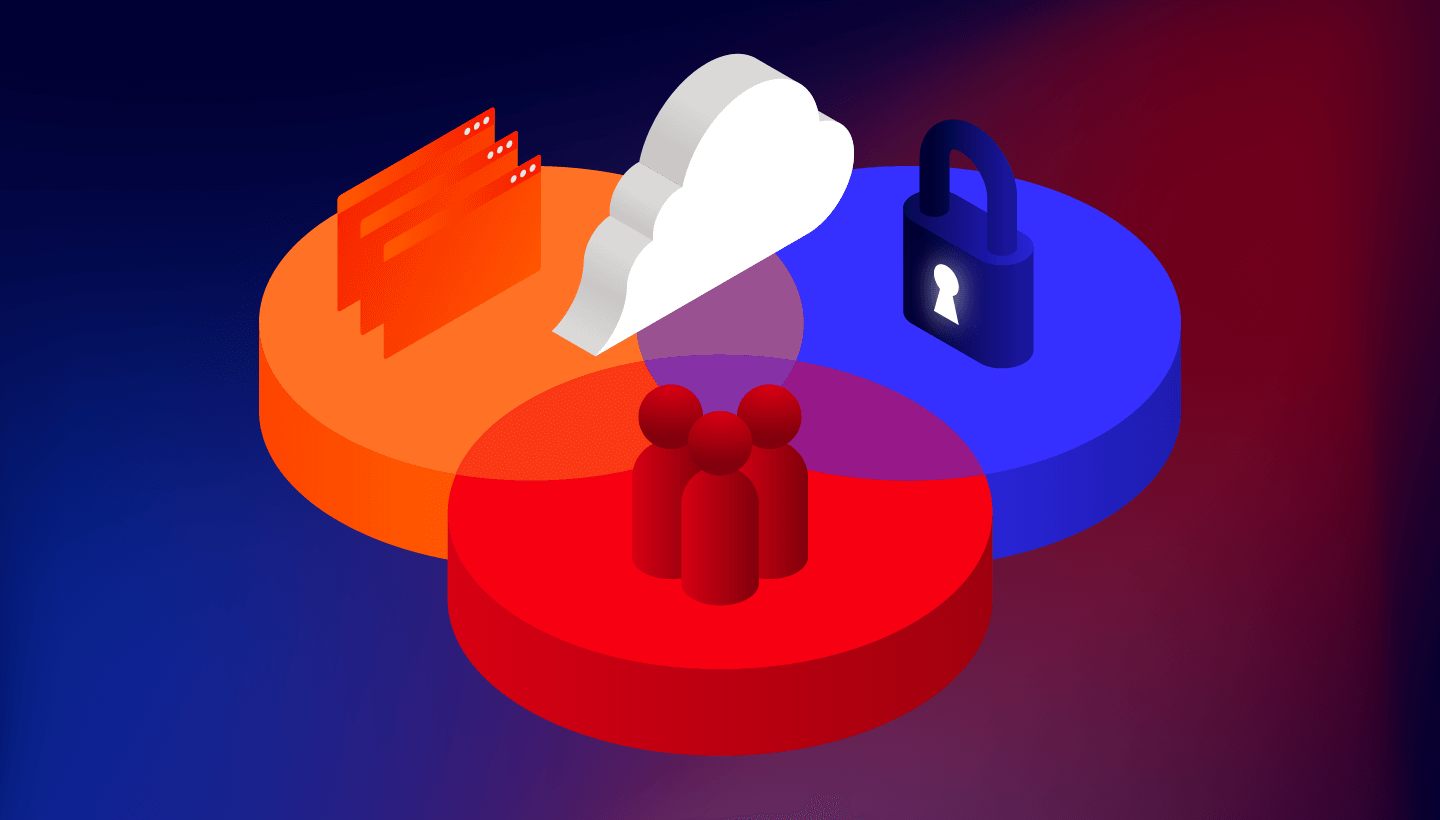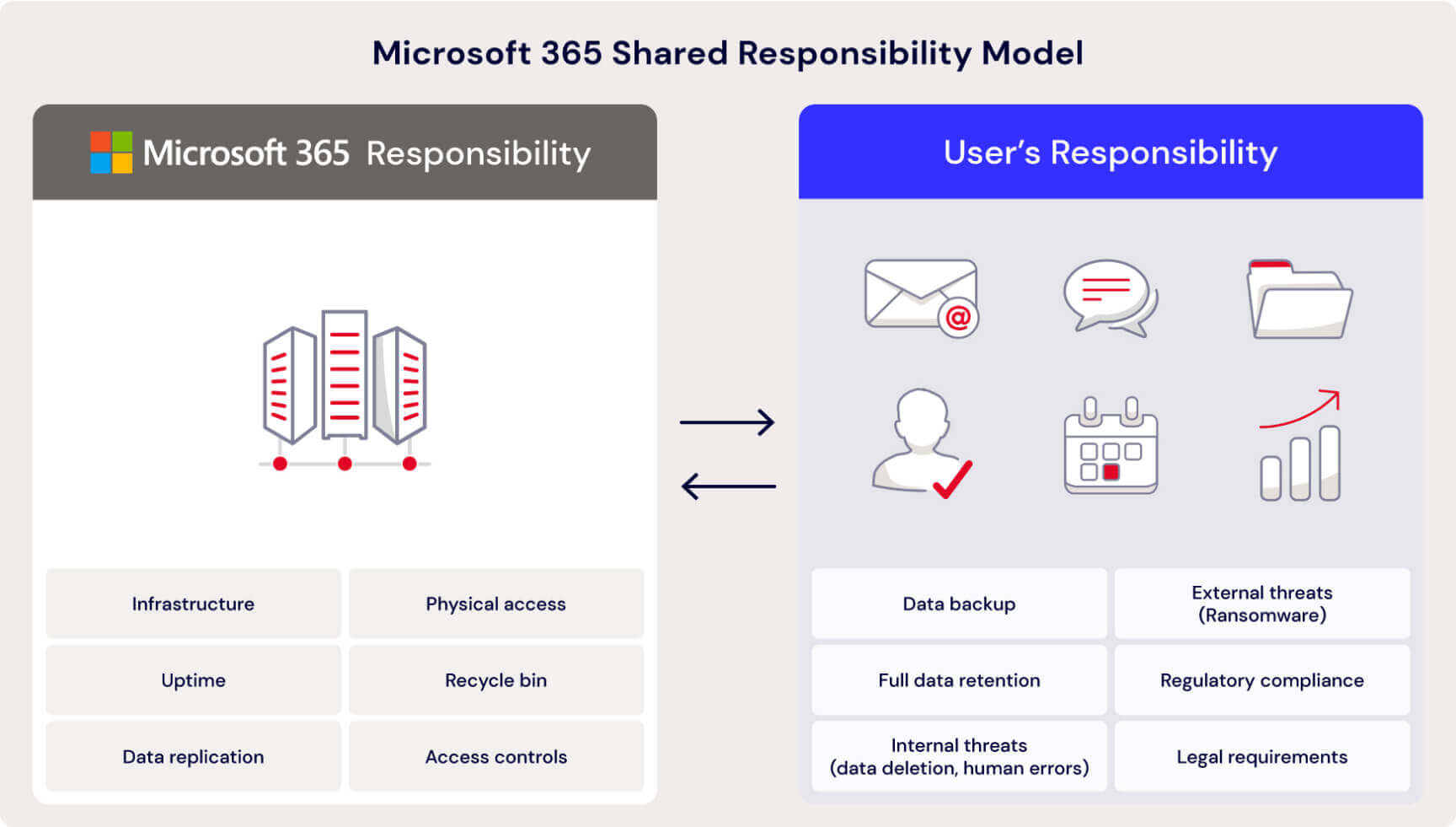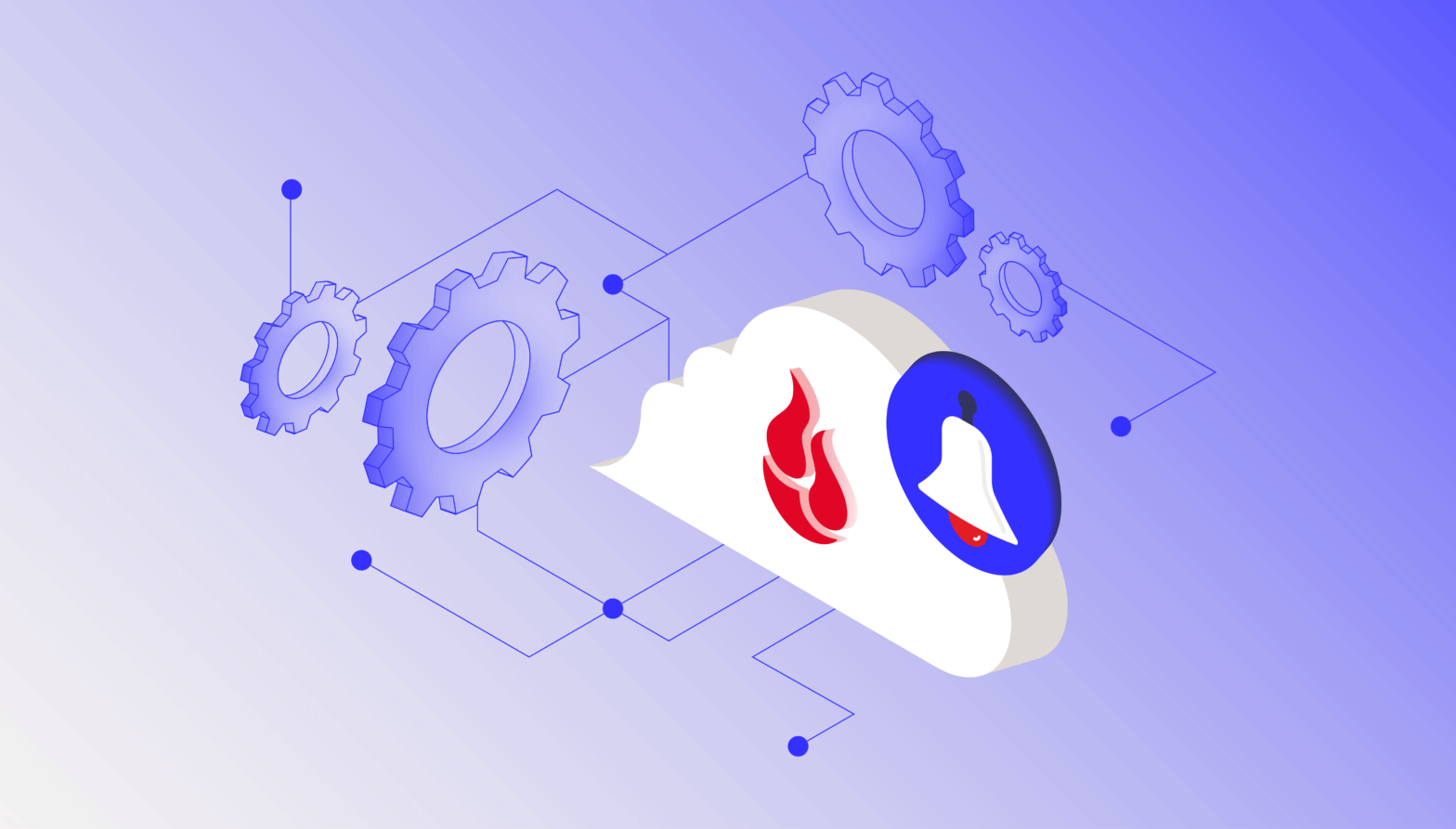
Were you the person who stayed up until 2 a.m. to finish the group project? If you, like me, burned the midnight oil to save the team from utter failure, you suffered from a breakdown of shared responsibility. No one knew who was supposed to do what.
The same breakdown applies when you don’t fully understand the “shared responsibility model” that most software as a service (SaaS) platforms use when it comes to your data. You might assume that, because it’s in the cloud, your SaaS data is protected automatically. In reality, SaaS companies are only responsible for maintaining their uptime, not for retaining your files and critical information in case you need to get back online—and this has big implications for how you protect your data, ensure compliance, and optimize system performance.
Today, I’m diving into what this model means and how it affects how you use SaaS platforms.
What is the shared responsibility model?
The shared responsibility model defines the division of duties between a SaaS provider and its customers. It delineates which aspects of the system the provider manages and what tasks remain under the customer’s control. The primary goal is to clarify roles and reduce any ambiguity about who is responsible for certain aspects of security, data integrity, and system maintenance.
Defined roles, reduced ambiguity. That all sounds great to me, but what do SaaS providers actually take responsibility for? And what are you responsible for?
SaaS provider responsibilities
First and foremost, SaaS providers are responsible for ensuring that the application and its underlying infrastructure (servers, networking, data centers) are secure. This includes physical security, network protection, patching the platform, and overall system integrity. They typically guarantee a certain level of service availability, often formalized in a service level agreement (SLA). Downtime, system performance, and platform updates fall within the vendor’s scope.
Practically speaking, that means that they may not back up your data as often as you would like or archive it for as long as you need. SaaS vendors do not concern themselves with fully protecting your files. Most importantly, they may not offer a timely recovery option if you lose the data, which is critical to getting your business back online in the event of an outage.
Customer responsibilities
SaaS providers and cloud drives typically take responsibility for the security “of” the cloud, including the infrastructure that runs all of the services offered in the cloud. On the other hand, the customers are responsible for security “in” the cloud. This means customers must manage the security of their own data.
What’s the difference? Let’s use an example I’ve come across many times. If a user inadvertently uploads a ransomware-infected file to a cloud drive like Google Drive or OneDrive, the service might protect the integrity of the cloud infrastructure, ensuring the malware doesn’t spread to other users. However, the responsibility to prevent the upload of the infected file in the first place, and managing its consequences, falls directly on the user. In essence, while cloud drives provide a platform for storing your data, relying solely on them without understanding the nuances of the shared responsibility model could leave gaps in your data protection strategy.
Customer responsibilities include, among others:
- Data protection: While the provider secures the infrastructure, you are responsible for securing the data you upload, manage, and store within the platform. SaaS platforms may replicate data and have redundancy safeguards in place to ensure you can access your data through the platform reliably, but they do not assume responsibility for their users’ data. It’s up to you to ensure your data is backed up according to your needs and policies.
- Access management: You are responsible for controlling who has access to the SaaS environment. This involves creating strong user authentication processes, managing roles and permissions, and ensuring that the right people have access to the right information.
- Compliance: Even if the SaaS vendor is compliant with say HIPAA or GDPR standards, you are also responsible for ensuring that you’re using the platform in accordance with those standards.
Here’s a graph that shows how shared responsibility breaks down for Microsoft 365 as just one example:

When the shared responsibility model matters
Unfortunately, I’ve found the shared responsibility model can create a false sense of security because understanding your responsibilities as a customer is often a process of elimination. SaaS responsibilities may be hard to track down, and when you can find them, they won’t say “you need to handle backups.” They’ll list what the provider handles, and all the rest is up to you.
When does this become important for you?
- Security breaches: Many security incidents occur because of a misunderstanding of this model. For example, if a company assumes their SaaS provider is responsible for data encryption and user access control when, in fact, the company is, this can lead to critical vulnerabilities. A lack of clarity can expose businesses to data breaches, financial losses, and reputational damage.
- Compliance issues: Regulatory compliance is another area that hinges on understanding shared responsibilities. Organizations that fail to implement required security measures or back up data properly can face fines, penalties, or legal consequences—even if the SaaS provider adheres to all necessary certifications.
- Operational efficiency: Knowing where your responsibility starts and ends helps optimize how you use the platform. You can improve operational efficiency by focusing on the areas you control.
And, this gets even more complicated the larger your business and the more complicated your processes. So, if you have a business running on Google Workspace or M365, you can take something like emails and understand that Google is responsible for the email platform, but you should backup the individual emails themselves. But what about when you’re a media management company using best-of-breed tools for editing and collaboration, transcoding, asset management, and maybe even content delivery? All of those platforms have some responsibility in a shared responsibility model, and your job as a business is to understand where you are vulnerable—and then plug the gaps.
Navigating the shared responsibility model
So, what should you do with all of this information? In my experience, these are the biggest takeaways businesses can put into practice to successfully navigate the shared responsibility model:
- Know your provider’s SLAs and security measures. Before adopting a SaaS solution, ensure you have a clear understanding of the vendor’s SLA and their security protocols. Understand the terms of their compliance with data privacy regulations, system availability, and disaster recovery.
What are Backblaze’s security and compliance protocols?
…is a question that would absolutely make sense for you to be asking. And I’m glad you did. Check out our Security and Compliance pages to learn more.
- Educate your teams. Make sure that your internal teams are aware of their responsibilities in the shared model. Provide training on access control, data management, and security best practices to prevent accidental data exposure or misconfigurations.
- Monitor and audit your usage. Set up regular audits to ensure that your organization is meeting its obligations under the shared responsibility model. Use tools to monitor access, detect unusual activity, and ensure data is being properly managed.
- Make sure your backups are comprehensive. If you’re here, you’re probably well aware of this, but I can’t stress enough how important it is to back up your data, including data stored in cloud services like Microsoft 365, Google Drive, and OneDrive. Even if these services offer backups as part of the service, they may not meet your recovery needs.
How to approach the shared responsibility model
All this to say, you are ultimately responsible for backing up your data and files stored in SaaS clouds or cloud drives. The bottom line is that SaaS platforms’ top priority is to keep their own services running. By clearly understanding your role and responsibilities in this model, you can not only protect your data and ensure compliance, but also maximize the value of your SaaS investments.




